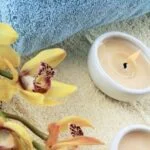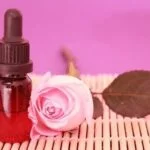Are you curious about how to make aromatherapy oil diffuser? Aromatherapy has been used for centuries as a natural way to promote physical and emotional well-being.
One popular method of experiencing the benefits of essential oils is through the use of oil diffusers, which disperse the aroma of the oils into the air. In this article, we will explore the world of aromatherapy and oil diffusers, including how to choose the right essential oils, selecting the proper base oil for dilution, creating your own DIY diffuser blends, and choosing the right diffuser for your needs.
Aromatherapy is a holistic healing treatment that uses natural plant extracts to promote health and well-being. When essential oils are inhaled, they can stimulate areas of your limbic system – which is a part of your brain that plays a role in emotions, behaviors, sense of smell and long-term memory.
Oil diffusers are devices that disperse essential oils into the air so that their aroma fills a room or an area with the natural fragrance. By using an oil diffuser, you not only enjoy a beautiful scent but you can also benefit from medicinal properties found in many essential oils.
There are several different types of oil diffusers available in the market today such as ultrasonic, nebulizing, heat and evaporative diffusers. Each type has its own unique way of dispersing essential oils into the air. It’s important to understand how each type works in order to choose one that best suits your needs and preferences. So let’s start our journey into making your own aromatherapy oil diffuser which will elevate your well-being naturally.
Choosing the Right Essential Oils
When it comes to making your own aromatherapy oil diffuser, choosing the right essential oils is crucial in achieving your desired therapeutic benefits. Essential oils are derived from plants and offer a range of physical and psychological benefits when used in aromatherapy. Understanding the different types of essential oils and their specific benefits is essential in creating a personalized and effective diffuser blend.
Types of Essential Oils
There are hundreds of essential oils available on the market, each with its own unique scent and therapeutic properties. From calming lavender to invigorating peppermint, it’s important to familiarize yourself with the various types of essential oils and their specific benefits for aromatherapy. Some common types of essential oils include citrus (e.g. orange, lemon), floral (e.g.
rose, jasmine), woody (e.g. cedarwood, sandalwood), and herbal (e.g. basil, rosemary). Each type of oil offers distinct aromatherapeutic properties that can help improve mood, reduce stress, boost focus, or promote relaxation.
Specific Benefits for Aromatherapy
Different essential oils have different effects on the mind and body, making them suitable for various purposes in aromatherapy. For example, lavender oil is well-known for its calming properties and can be used to promote relaxation and alleviate anxiety.
On the other hand, eucalyptus oil is often used for its decongestant and respiratory-clearing effects. When choosing essential oils for your homemade diffuser blend, consider the specific benefits you want to achieve-whether it’s to uplift the mood, enhance mental clarity, or create a soothing ambiance for better sleep.
Blending Essential Oils
Once you’ve selected the essential oils that align with your desired outcomes for aromatherapy, you can begin experimenting with blending them together to create a custom diffuser solution. Blending different essential oils allows you to create complex scents that may offer a broader range of therapeutic benefits.
Certain blends can also complement one another to enhance their individual effects when diffused together. Additionally, understanding how to properly dilute each oil based on its potency is important in creating safe yet effective diffuser solutions.
By gaining an understanding of the diverse range of essential oils available and their specific benefits for aromatherapy use, you can make informed choices when crafting your own personalized oil diffuser blends at home.
Selecting the Base Oil
When it comes to making your own aromatherapy oil diffuser blends, selecting the right base oil is crucial for diluting essential oils. Carrier oils play a key role in the diffusion process, as they help to disperse the aromatic molecules of the essential oils into the air, allowing you to enjoy their therapeutic benefits.
There are several carrier oils available, each with its own unique properties and benefits for aromatherapy. Here are some popular carrier oils to consider for creating your own homemade diffuser blends:
- Jojoba Oil: Known for its long shelf life and fast absorption, jojoba oil is ideal for blending with essential oils as it does not oxidize or become rancid easily.
- Coconut Oil: With its light and sweet aroma, coconut oil is a great option for creating tropical or exotic scented diffuser blends.
- Almond Oil: Rich in vitamins and nutrients, almond oil is often used as a base oil for relaxation and skin-nourishing blends.
It’s important to consider the specific properties of each carrier oil when selecting one for your homemade diffuser blend. Some carrier oils may have a stronger scent or thicker consistency than others, which can impact the overall aroma and diffusion rate of the essential oils. Additionally, certain carrier oils may be better suited for specific skin types if there is direct contact with the diffuser solution.
When creating your own aromatherapy oil diffuser blend, it’s recommended to start with a small amount of carrier oil and essential oils to test the scent strength and diffusion performance before making larger quantities. Experimenting with different carrier oils and essential oil combinations will allow you to find the perfect blend that suits your preferences and desired therapeutic effects. By understanding the properties of various carrier oils, you can create custom-made diffuser blends tailored to your individual needs.
DIY Aromatherapy Oil Diffuser Recipes
Creating your own essential oil blends for aromatherapy can be a fun and rewarding experience. By customizing your own mixtures, you have the power to tailor them to your specific needs and preferences. Whether you’re looking to promote relaxation, enhance focus, or boost energy, there are various essential oil combinations that can help achieve your desired results.
To make an aromatherapy oil diffuser at home, start by selecting the essential oils that correspond with the purpose you have in mind. For relaxation, consider using lavender or chamomile essential oils. For increased focus, rosemary or peppermint oils may be beneficial. And for an energy boost, citrus oils like lemon or orange could be ideal choices.
Once you’ve chosen the essential oils for your recipe, it’s important to dilute them with a carrier oil before use in a diffuser. Common carrier oils include almond oil, jojoba oil, and coconut oil. The ratio of essential oil to carrier oil will depend on personal preference and sensitivity levels.
Finally, as safety is paramount when working with essential oils, ensure that you thoroughly research each oil before use and follow proper dilution guidelines. It’s also recommended to do a patch test on a small area of skin before applying any new blend more extensively to ensure no adverse reactions occur.
| Essential Oil | Purpose |
|---|---|
| Lavender | Relaxation |
| Rosemary | Focus |
Making the Diffuser Solution
Creating a custom aromatherapy oil diffuser solution is a wonderful way to personalize your aromatherapy experience and tailor it to your specific needs. By mixing essential oils with a carrier oil, you can create a safe and effective blend that you can use in your diffuser. This section will provide you with a detailed guide on the process of making the diffuser solution for your homemade aromatherapy oil diffuser.
Choosing the Right Essential Oils
The first step in making your own aromatherapy oil diffuser solution is choosing the right essential oils for your desired purpose. Whether you’re looking to create a relaxing atmosphere, promote focus and concentration, or boost energy levels, there are specific essential oils that are known for their unique properties in achieving these goals. Lavender, chamomile, and bergamot are great choices for relaxation, while peppermint, rosemary, and eucalyptus are excellent for increasing alertness and energy.
Selecting the Base Oil
Once you have selected the essential oils for your desired blend, it’s important to choose a suitable carrier oil to dilute them. Carrier oils such as almond oil, jojoba oil, or coconut oil are commonly used for this purpose. Each carrier oil has its own properties and benefits, so it’s important to consider factors such as scent, absorption rate, and skin compatibility when selecting the right base oil for your aromatherapy blend.
Mixing the Essential Oils With the Carrier Oil
To create your diffuser solution, begin by choosing an appropriate container for mixing the essential oils with the carrier oil. Use a clean glass bottle or jar to prepare the blend.
Add approximately 15-20 drops of essential oils per ounce of carrier oil – however this ratio can be adjusted based on personal preference and strength of aroma desired. Gently swirl or shake the container to thoroughly mix the essential oils with the carrier oil before using it in your aromatherapy oil diffuser.
By following these guidelines on how to make an aromatherapy diffuser solution with essential oils and carrier oils, you can easily customize an aromatic blend that suits your individual preferences and requirements.
Choosing the Right Diffuser
When it comes to choosing the right diffuser for your homemade aromatherapy oils, there are several options available in the market. Each type of diffuser has its unique features and benefits, so it’s essential to understand how they work and how to select the best one for your needs.
Here are some of the different types of diffusers available for use with homemade aromatherapy oils:
1. Ultrasonic Diffusers: These diffusers use ultrasonic vibrations to break down essential oils into a fine mist that is then dispersed into the air. They also act as humidifiers, adding moisture to the air which can be beneficial in dry climates or during winter months.
2. Nebulizing Diffusers: This type of diffuser does not require water or heat to disperse essential oils. Instead, it uses pressurized air to create a fine mist of pure essential oil particles, providing a more potent aroma and therapeutic benefits.
3. Heat Diffusers: As the name suggests, these diffusers use heat to evaporate the essential oils and release their aroma into the air. While they are simple and easy to use, they may alter the chemical composition of the oils and reduce their therapeutic properties.
When selecting the best diffuser for your needs, consider factors such as the size of the area you want to cover, ease of maintenance, noise level, and personal preference for scent intensity. It’s important to choose a diffuser that suits your lifestyle and provides a safe and effective way to enjoy your homemade aromatherapy oil blends.
Regardless of which type you choose, knowing how to make an aromatherapy oil diffuser at home will certainly elevate your wellness routine. With just a few simple ingredients and tools, you can easily create your own custom blend of scents tailored specifically for your needs.
Tips for Using Aromatherapy Oil Diffusers
Creating your own aromatherapy oil diffuser can be a fun and rewarding experience, but knowing how to use it effectively is key to achieving the desired results. Here are some tips and tricks for using your homemade oil diffuser:
1. Placement: When using your aromatherapy oil diffuser, it’s important to consider where you place it in the room. For optimal diffusion, choose a location that is away from direct sunlight and heat sources, as these can affect the integrity of the essential oils. Additionally, placing the diffuser at a higher level in the room will help distribute the aroma more evenly.
2. Airflow: Proper airflow in the room can significantly impact the effectiveness of your homemade oil diffuser. Make sure there is adequate air circulation by opening windows or using fans to disperse the aroma throughout the space.
3. Timing: The duration for which you run your DIY aromatherapy oil diffuser can also impact its effectiveness. Most experts recommend running the diffuser for 30-60 minutes at a time, and then taking a break before starting another session. This allows you to enjoy the benefits of aromatherapy without overwhelming your senses.
Properly using your homemade aromatherapy oil diffuser will ensure that you get the most out of your essential oils and enjoy all their therapeutic benefits.
| Tips | Details |
|---|---|
| Placement | Choose a location away from direct sunlight and heat sources for optimal diffusion |
| Airflow | Ensure adequate air circulation in the room by opening windows or using fans |
| Timing | Run the diffuser for 30-60 minutes at a time with breaks in between sessions |
Safety Precautions and Maintenance
In conclusion, making your own aromatherapy oil diffuser can be a rewarding and cost-effective way to create a relaxing and uplifting atmosphere in your home or workspace. By following the steps outlined in this guide, you can customize your own unique essential oil blends to suit your individual needs, whether it’s for relaxation, focus, or energy.
Understanding the benefits of aromatherapy and the specific properties of different essential oils will give you the knowledge to create effective and personalized diffuser solutions.
It is important to note that when using essential oils in a diffuser, safety precautions should always be taken to prevent any adverse reactions. Diluting essential oils with carrier oils not only helps to disperse the scent more effectively but also reduces the risk of skin irritation or respiratory issues.
Additionally, regular maintenance of your diffuser is crucial for optimal performance and longevity. Cleaning the device regularly and following the manufacturer’s guidelines for upkeep will ensure that it continues to function effectively.
By carefully selecting the right diffuser for your needs and taking proper safety measures when creating and using your essential oil blends, you can enjoy the many benefits of aromatherapy in a safe and sustainable way. Experimenting with different blends and methods will allow you to find what works best for you, providing a sensory experience that promotes well-being and relaxation.
With these tips and guidelines on how to make an aromatherapy oil diffuser at home, you can embark on a journey towards creating an inviting and tranquil environment through the power of scent.
Frequently Asked Questions
How Do You Make Aromatherapy Diffuser Oil at Home?
Making aromatherapy diffuser oil at home is a simple process that involves mixing essential oils with a carrier oil, such as almond or jojoba oil. The essential oils you choose will depend on the scent you want to achieve, and the carrier oil helps dilute the potency of the essential oils.
What Ingredients Do You Need to Make Diffusers?
The ingredients needed to make diffusers include essential oils, a carrier oil, and reed sticks or bamboo skewers. The essential oils are the primary source of fragrance, while the carrier oil helps disperse the scent. The reed sticks or bamboo skewers act as wicks to draw the oil up and release the fragrance into the air.
What Is the Best Oil for Homemade Diffuser?
When making homemade diffuser oil, it’s important to choose an essential oil that not only has a pleasant aroma but also has good staying power. Essential oils like lavender, eucalyptus, peppermint, and citrus oils are popular choices for homemade diffusers due to their strong scents and therapeutic properties.
Experimenting with different combinations can help create the best scent for your homemade diffuser.

Are you looking for a natural way to improve your health and wellbeing?
If so, aromatherapy may be the answer for you.





